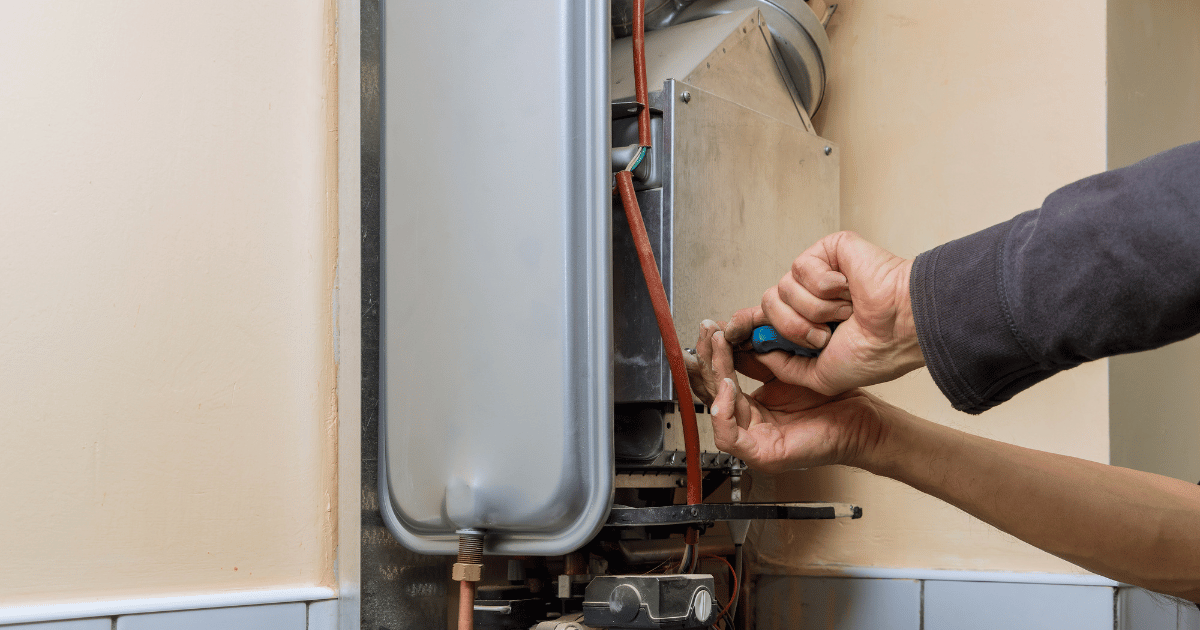Ways to Maintain Your Home's Hot Water System Functioning Well
Ways to Maintain Your Home's Hot Water System Functioning Well
Blog Article
Are you currently searching for help and advice about Tips For Maintaining Your Hot Water Heater?
:max_bytes(150000):strip_icc()/tankless-hot-water-system-in-the-basement-of-a-green-technology-home-529577258-77afda16fd494c6899a78000888c3204.jpg)
Warm water is important for daily convenience, whether it's for a refreshing shower or washing meals. To ensure your warm water system runs effectively and lasts longer, routine maintenance is essential. This article provides sensible ideas and insights on just how to preserve your home's hot water system to avoid disturbances and expensive repairs.
Intro
Preserving your home's warm water system could seem challenging, but with a couple of easy actions, you can ensure it runs efficiently for years ahead. This guide covers every little thing from comprehending your hot water system to do it yourself maintenance pointers and understanding when to call in specialist help.
Value of Maintaining Your Warm Water System
Routine upkeep not only expands the lifespan of your warm water system but likewise ensures it runs efficiently. Ignoring upkeep can result in lowered efficiency, greater energy expenses, and also premature failure of the system.
Indicators Your Hot Water System Requirements Upkeep
Knowing when your hot water system requires interest can stop major issues. Look out for signs such as inconsistent water temperature level, unusual sounds from the heating system, or corroded water.
Comprehending Your Warm Water System
Prior to diving into maintenance jobs, it's handy to comprehend the basic components of your warm water system. Commonly, this includes the water heater itself, pipes, anode poles, and temperature controls.
Regular Monthly Upkeep Tasks
Normal month-to-month checks can help catch minor problems before they intensify.
Purging the Hot Water Heater
Purging your water heater gets rid of sediment accumulation, enhancing efficiency and lengthening its life.
Monitoring and Changing Anode Rods
Anode rods prevent corrosion inside the container. Evaluating and replacing them when worn is critical.
Evaluating and Adjusting Temperature Settings
Adjusting the temperature settings guarantees ideal performance and security.
DIY Tips for Maintenance
You can carry out a number of maintenance tasks yourself to keep your hot water system in top problem.
Looking for Leaks
Routinely examine pipes and connections for leakages, as these can bring about water damages and higher expenses.
Checking Pressure Relief Valves
Testing the stress safety valve guarantees it operates appropriately and stops extreme pressure buildup.
Shielding Pipelines
Protecting warm water pipes reduces warmth loss and can conserve energy.
When to Call a Professional
While DIY upkeep is beneficial, some concerns call for specialist experience.
Complex Issues Requiring Professional Help
Instances consist of major leaks, electric issues, or if your water heater is continually underperforming.
Routine Specialist Upkeep Conveniences
Expert maintenance can consist of extensive examinations, tune-ups, and guaranteeing compliance with safety and security requirements.
Conclusion
Normal maintenance of your home's hot water system is vital for effectiveness, long life, and price savings. By complying with these tips and recognizing when to seek specialist assistance, you can ensure a dependable supply of hot water without unforeseen disruptions.
How to Maintain an Instant Hot Water Heater
Before tinkering with your hot water heater, make sure that it’s not powered on. You also have to turn off the main circuit breaker and shut off the main gas line to prevent accidents. Also turn off the water valves connected to your unit to prevent water from flowing into and out of the appliance. 2. When you’re done, you have to detach the purge valves’ caps. These look like the letter “T†and are situated on either side of the water valves. Doing so will release any pressure that has accumulated inside the valves while at the same time avoid hot water from shooting out and burning your skin. 3. When the purge valves’ caps are removed, you have to connect your hosing lines to the valves. Your unit should have come with three hoses but if it didn’t, you can purchase these things from any hardware or home repair shops. You can also get them from retail stores that sell water heating systems. Read the user’s manual and follow it to complete this task properly. When the hosing lines are connected, open the purge port’s valves. 4. You should never use harsh chemical cleaners or solutions when cleaning your unit. Make use of white vinegar instead. It should be undiluted and you’ll probably use about 2 gallons. 5. Now flush your water heater. This task should probably take about 40 minutes. We can’t give you specific directions for this because the procedure is carried out depending on the type, model and brand of your heater. With that being said, refer to the user’s manual. 6. When you’re done draining the unit, you have to turn off the purge port valves again. Remove the hosing lines that you earlier installed on each of the water valves. Put the valve caps (purge port) back in their respective places and be very careful so as not to damage the rubber discs that are found inside these caps. 7. Now that everything’s back in place, check your user’s manual again to find out how to reactivate your water heating system. 8. Once it is working, turn one of your hot water faucets on just to let air pass through the heater’s water supply pipes. Leave the tap on until water flows smoothly out of it. https://www.orrplumbing.com/blog/2014/september/how-to-maintain-an-instant-hot-water-heater/

As an avid reader about How to Maintain Your Water Heater & Prolong its Life, I imagined sharing that excerpt was beneficial. Those who liked our article kindly do not forget to share it. Thanks a lot for your time. Come back soon.
Book Today Report this page